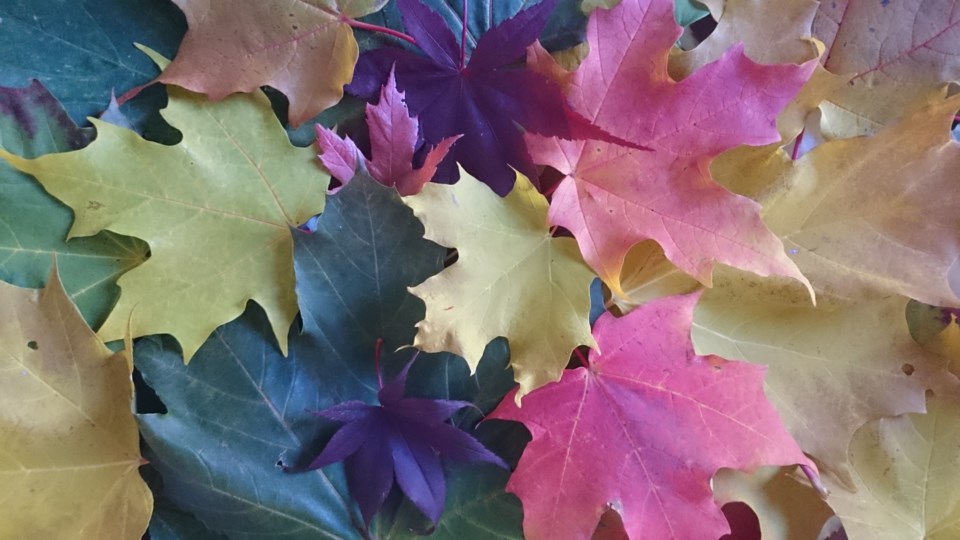Autumn is one of my favourite seasons as there is much seasonal change and beauty. On the prairies, we do not always see the entire array of autumn colours, but when we do it is greatly appreciated. Unfortunately, there are only a few places in the world that have the combination of tree types and climatic conditions necessary for all the colours of vivid autumn foliage. It is the deciduous trees and shrubs that display the most striking autumn colour.
Evergreens will also develop autumn colouration, but the colour changes are more gradual. Many homeowners become unnecessarily alarmed when in the autumn the interior needles of their pines, spruce and fir change colour. They mistakenly interpret this as a disease or insect problem, not realizing that even evergreens occasionally shed their leaves.
The variety of leaf colours that we enjoy is due to the physics of sunlight striking the pigments in the leaves. Chlorophylls, carotenoids, anthocyanins and tannins are the four broad categories of pigments found in leaves. These same pigments are also responsible for the array of colours in flowers. During spring and summer, the leaves serve as the principal site for the photosynthetic process in which carbon dioxide and water with the aid of light are manufactured into carbohydrates or food for the plants. This process takes place in the cells containing chlorophyll. This chlorophyll also gives the leaf its green colour. As the days shorten and temperatures cool, there is a decline in the rate of photosynthesis as well as the synthesis of new chlorophyll. As the green pigment decreases, other pigments present in the leaf become more evident.
Other pigments present in the leaves include yellow or orange carotenoid pigments. This is the same pigment which gives the carrot its familiar colour. Carotenoid pigments in the leaves account for the yellow and golden leaf colour we see in the fall. The yellows of horse chestnut, poplar, birch and ash are lovely examples of carotenoid pigmentation. The presence of tannins along with the yellow carotenoid will give a more golden yellow pigmentation to the leaf.
Anthocyanin pigments are responsible for the pink, red and purple colours in the leaves. Maple, some oaks, viburnum and others show a reaction between various sugars and the anthocyanin pigment. That beautiful bright orange colour seen in some of our maples is the result of red anthocyanin pigment mixed with yellow carotenoids.
Many ask why the colouration some years is so brilliant. The answer is simply perfect climatic conditions. The most important environmental factors that influence the degree of colours are light intensity, temperature and water supply. Bright light favours brilliant red colouration. Every fall we get those autumn shades of yellow and brown but the brilliant hues that make the autumn landscape truly spectacular are a direct result of the weather. Warm, sunny days followed by cool nights with temperatures below 10 C (50 F), but not freezing will produce the best colour. Rainy or cloudy days without much light that occur near the time of peak colouration will decrease the autumn colouration. Heavy rains and high winds can sweep the leaves off the trees early. Freezing temperatures and very heavy frost will essentially stop all processes occurring within the leaf tissue before the pigments reach maximum development.
So enjoy the colours of autumn. Go for a walk, take a picture or two and enjoy this beautiful season to the fullest.
Hanbidge is the Lead Horticulturist with Orchid Horticulture. Find us at ; by email at [email protected]; on Facebook @orchidhort and on Instagram at #orchidhort. Tune into GROW Live on our Facebook page or check out the Youtube channel GROW
You can no longer count on social media to deliver important news to you. Keep your news a touch away by bookmarking SASKTODAY.ca's homepage at this link.
Here's why you should bookmark your favourites.
Subscribe to SASKTODAY.ca newsletter to get our daily news to your inbox.




